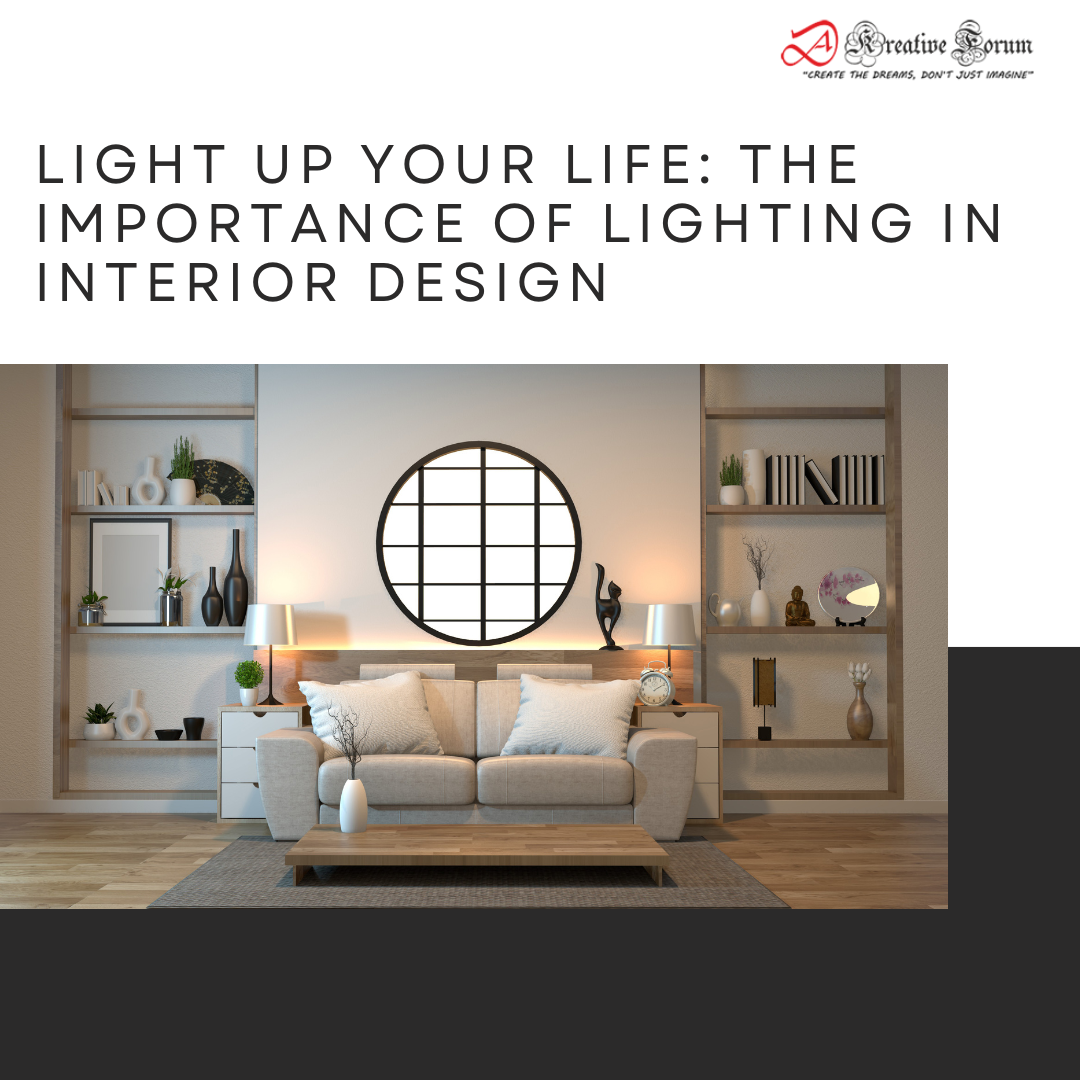
Light Up Your Life: The Importance of Lighting in Interior Design
Lighting is an essential element in interior design that can transform a space, enhance its aesthetics, and greatly influence the ambiance and functionality of a room. While often overlooked or underestimated, the careful selection and placement of lighting fixtures can create a significant impact on the overall design and atmosphere of any space. This article aims to highlight the importance of lighting in interior design and explore how it can be used to enhance various aspects of a room, including its functionality, mood, and visual appeal. By understanding the principles and techniques of lighting design, individuals can unleash the full potential of their spaces and create captivating and inviting environments.
Enhancing Functionality
Effective lighting design goes beyond just providing adequate illumination; it plays a crucial role in enhancing the functionality of a space. Different areas within a room have distinct lighting requirements based on their intended purpose. For example, task lighting is essential in areas like kitchens, home offices, and reading nooks to provide ample light for specific activities. By incorporating focused lighting fixtures such as pendant lights, desk lamps, or under-cabinet lights, individuals can optimize their productivity and create functional workspaces.
Similarly, ambient lighting is crucial in areas where a soft, diffuse glow is desired, such as living rooms and bedrooms. Using fixtures like chandeliers, recessed lights, or wall sconces, individuals can create a welcoming atmosphere while still providing sufficient illumination for general activities and socializing.
Additionally, accent lighting can be used to highlight architectural features, artwork, or decorative elements within a space. This technique adds depth and visual interest to the room, drawing attention to key focal points and creating a dynamic ambiance. By incorporating track lighting, picture lights, or adjustable spotlights, individuals can showcase their unique design elements and create a captivating visual experience.
Setting the Mood
Lighting is a powerful tool for setting the mood and ambiance in any space. By manipulating light levels, color temperatures, and light sources, individuals can create different atmospheres to suit their preferences or the specific purpose of the room. Warm, soft lighting with lower color temperatures, such as incandescent or warm LED bulbs, can evoke a cozy and intimate ambiance, perfect for relaxation areas like bedrooms or dining rooms.
On the other hand, cooler light temperatures, such as daylight or cool white LED bulbs, can create a bright and invigorating atmosphere. This type of lighting is ideal for spaces that require focus and energy, such as home offices or kitchens. By using dimmers, individuals can also adjust the intensity of the light to create a more relaxed or intimate setting as needed.
Moreover, the strategic placement of lighting fixtures can contribute to the overall mood of a room. Indirect lighting techniques, such as cove lighting or uplighting, can create a soft, diffused glow that bounces off walls or ceilings, providing a subtle and calming effect. Conversely, downlighting or pendant lights can create a more dramatic and dynamic ambiance by casting focused pools of light.
Enhancing Visual Appeal
Lighting is a vital tool for enhancing the visual appeal of a space and emphasizing its design elements. Properly illuminated spaces can appear larger, brighter, and more inviting. By using a combination of natural and artificial light sources, individuals can create layers of light that add depth and dimension to a room.
Natural light, when available, should be maximized by using window treatments that allow the flow of daylight while controlling glare and privacy. Supplementing natural light with well-placed artificial lighting fixtures can ensure consistent illumination throughout the day and create a balanced and visually pleasing environment.
In addition to providing adequate light, fixtures themselves can serve as design elements. Lighting fixtures come in a wide variety of styles, shapes, and materials, allowing individuals to choose pieces that complement their overall design scheme. Whether it's a sleek and modern pendant light or an ornate and traditional chandelier, lighting fixtures can add a touch of personality and become focal points themselves.
In conclusion, lighting plays a crucial role in interior design by enhancing functionality, setting the mood, and enhancing the visual appeal of a space. By understanding the different types of lighting and their applications, individuals can create versatile and captivating environments that cater to their specific needs and preferences. Whether it's through task lighting, ambient lighting, or accent lighting, each element can contribute to the overall aesthetic and functionality of a room. By carefully considering the lighting design during the interior design process, individuals can transform their spaces into inviting, functional, and visually stunning environments that truly light up their lives








